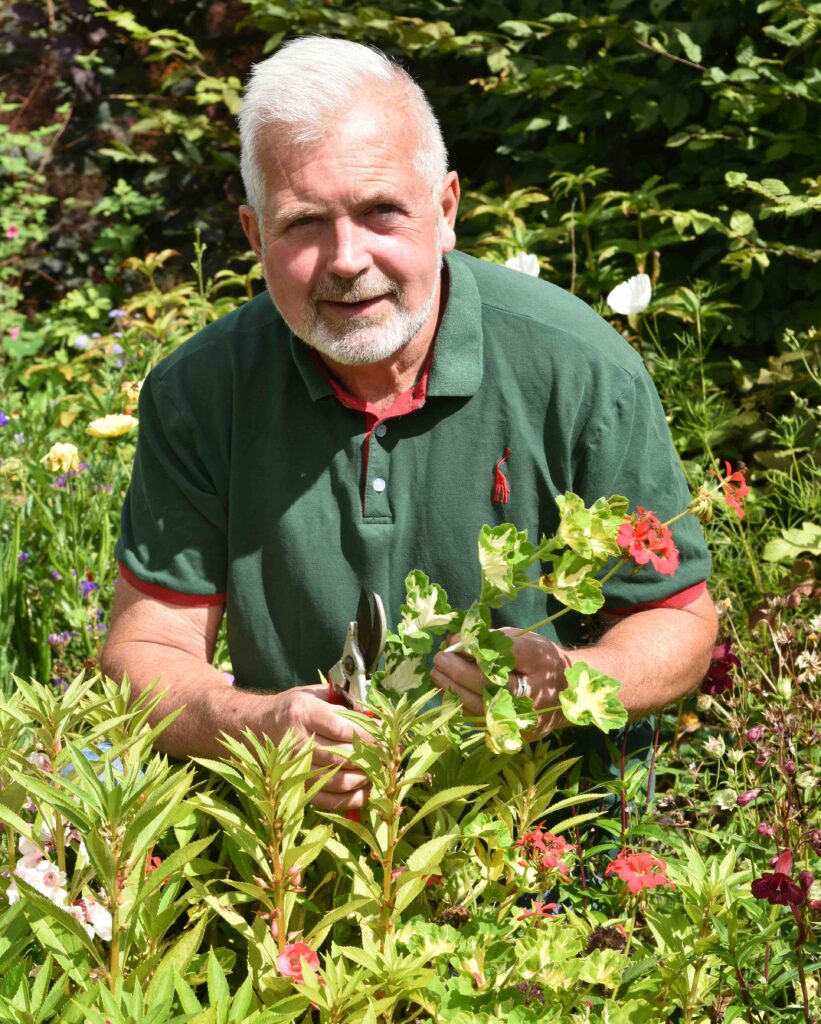
As the threat of autumn approaches (I am sorry to even mention this but gardeners must plan ahead) we need to take cuttings of any tender plants that may be killed by winter frost. Traditionally this has meant fuchsias and pelargoniums (bedding geraniums) but there are lots more plant that can be rooted as cuttings now. These include penstemons, diascias, nemesia and gazanias. There are also hardy shrubs that can be propagated now too and they all need the same or very similar treatment.
Why now?
The main reason is that temperatures are still quite moderate and so you do not need artificial heat. A cold greenhouse or a shady windowsill in the house will do fine. The plants will have lots of stems that are young enough to root well but are firm enough that they do not wilt too much or rot. And if rooted now they will be established before winter and can stay in their ‘rooting pots’ all winter and repotted in spring. This means less space taken up on the windowsill or in the conservatory.
What you need
You need a sharp gardening knife to prepare the cuttings. I often use the cheap craft knives sold in ‘bargain’ shops. You also need some clean pots. They can be plastic or terracotta or you can use cell trays (i usually do because I take lots of cuttings). You will need some form of propagator too. This needs to have a clear plastic top to help retain moisture around the cuttings and let in light. You can buy a propagator or you can cover the pot with a plastic bottle – there are endless variations.
And you will need compost. I use a mix of equal parts (by volume) of multipurpose compost and Perlite (you can also use vermiculite). You can use sharp sand but I prefer Perlite. Knights will sell these. Buy some fresh, good quality compost too – you only need a small bag.
Perlite (or vermiculite) ‘opens up’ the compost and helps drainage and does not add any nutrients. The base of the cutting must have air and perlite prevents the compost stifling the roots. Take care when handling Perlite. It is dusty and it is a good idea to add some water to the bag to reduce the dust as you handle ir.
Taking the cuttings
If it is a sunny day you don’t want the cuttings to wilt before you put them in the pots so collect them into a plastic bag. Fill your pots or trays before you collect the cuttings.
Collect cuttings from healthy shoots that do not have pests or diseases.
Once collected you can prepare them.
Most (but not all) cuttings are trimmed just below a node – where the leaves join the stem. This is where new roots will form. The length of the prepared cutting will vary with the plant but the prepared cutting should have a length of stem without leaves that is actually in the compost and one or two leaves on the stem above the compost. Some plants have opposite leaves in pairs while others have alternate leaves so the precise look of the cutting will vary.
Always remove any flowers or flower buds. If they are left on the cutting it will try to open the blooms rather than root and the old flowers can cause rot.
Pelargoniums
These days, pelargoniums are often grown from seed by nurseries but the best kinds, including those with colourful foliage, are grown from cuttings.
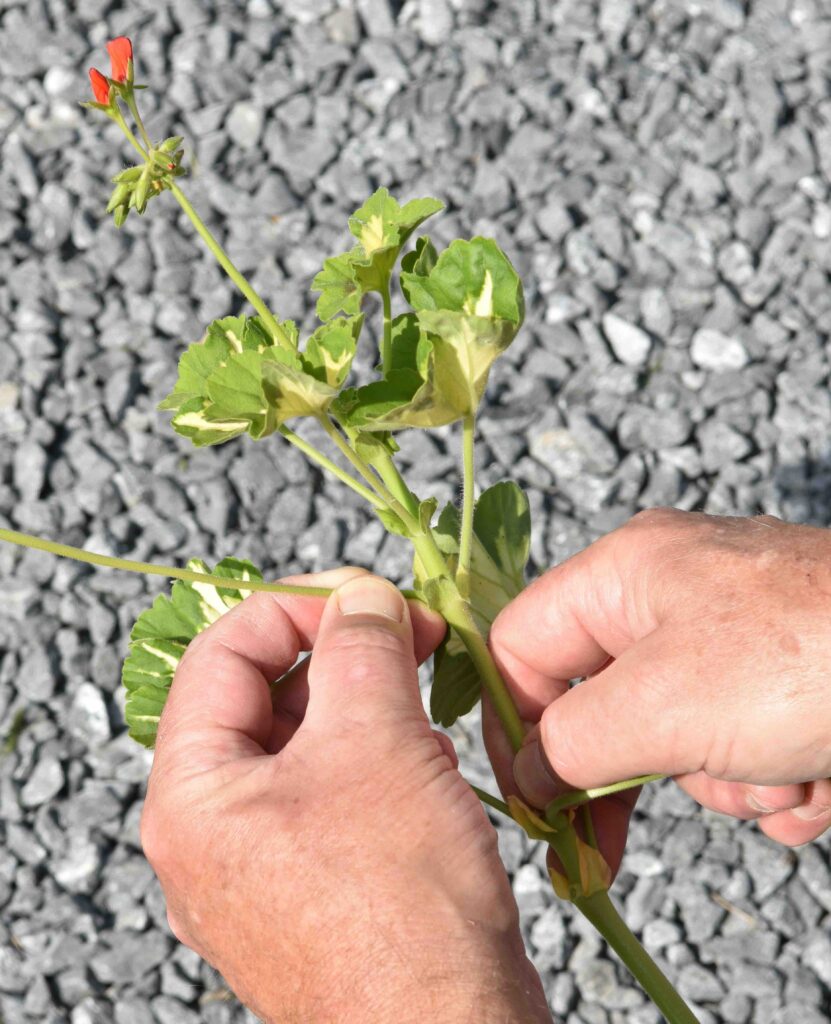
Start by removing any flowers and flower buds.
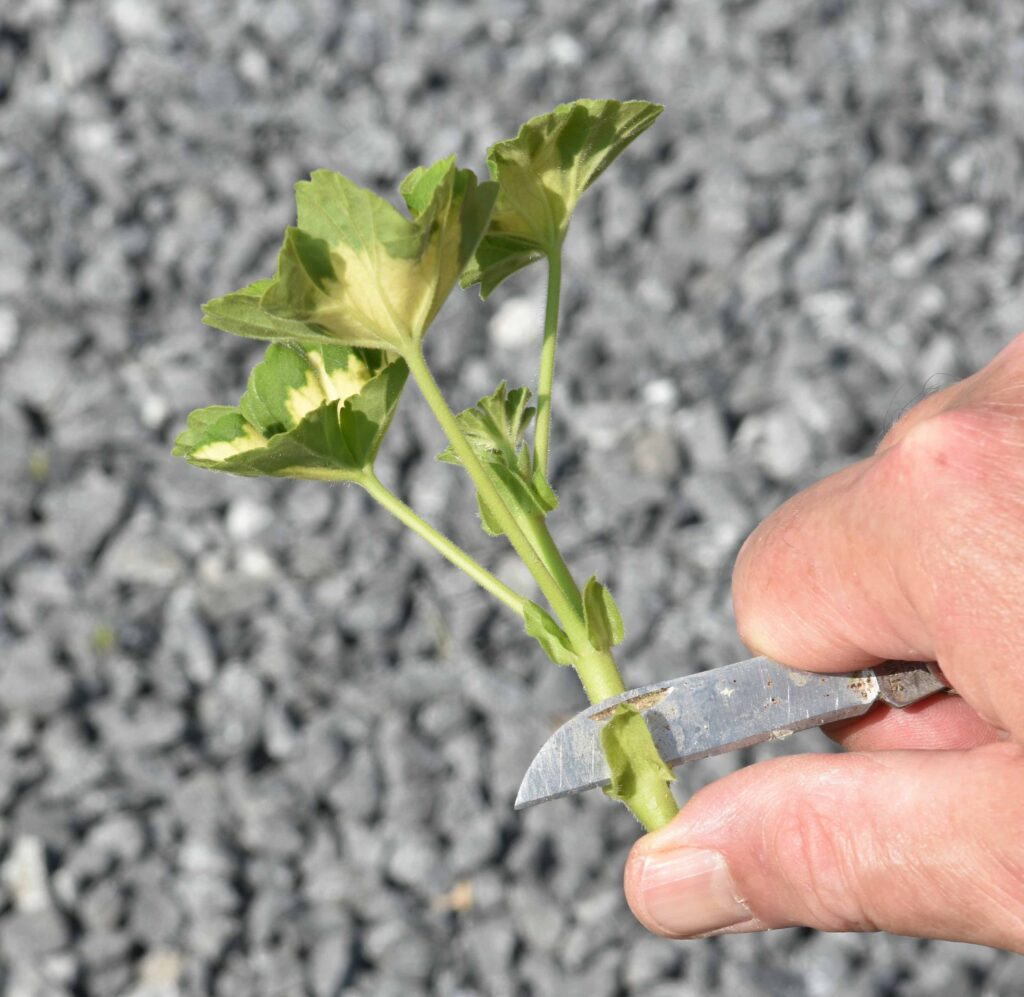
Trim the cutting just below a ‘node’ and then remove the lower leaves. Pelargoniums have small, leaf-like ‘stipules’ at each leaf joint and these must also be removed. Then remove any other leaves and stipules so the cutting has one or two mature leaves.
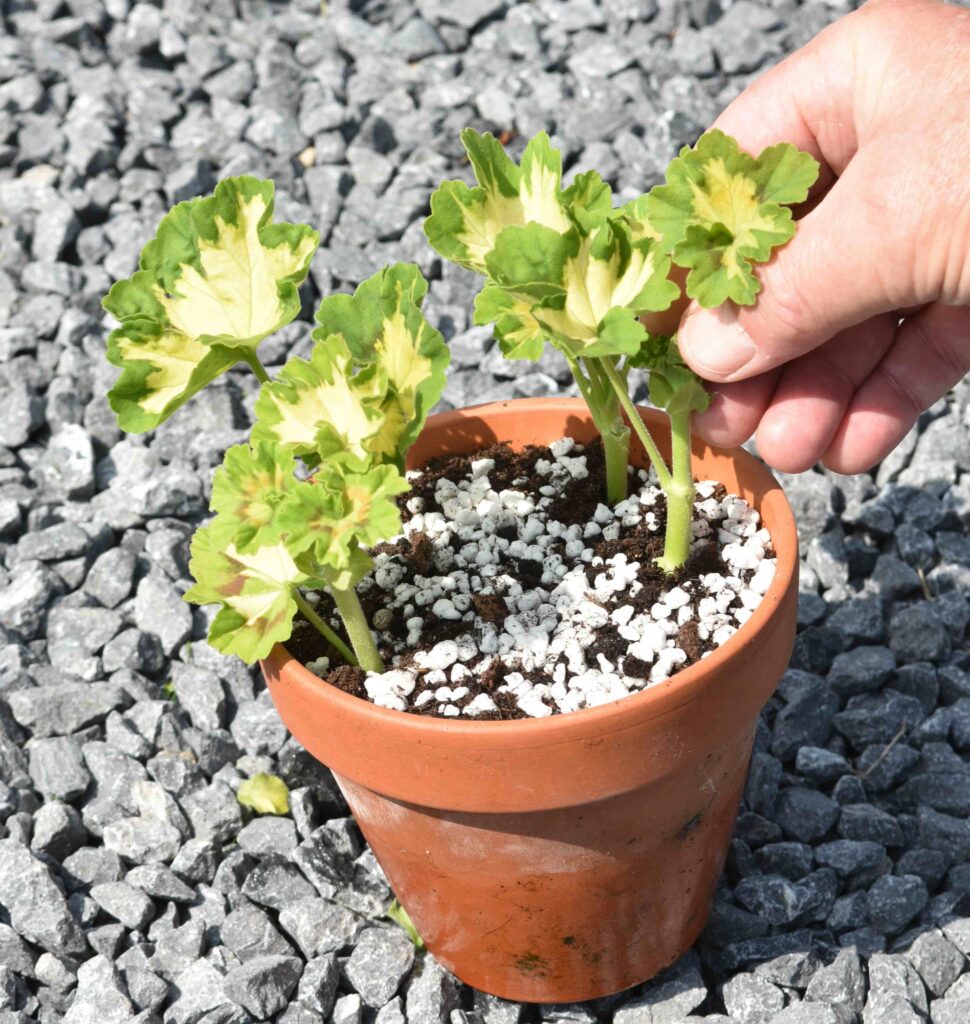
You can then make a hole in the compost and put in the cuttings. Water well and pop in the propagator.
There is no need to use any rooting chemicals. When using terracotta pots it helps rooting to put the cuttings around the edge. Water evaporating through the pot surface actually stimulates rooting.
Keep the compost moist and give water when needed. Keep the propagator in a shady place. The cuttings will probably wilt on warm days but should ‘pick up’ overnight. Do not pull them up to check rooting! You will know they are rooted when they no longer wilt and the cuttings start to grow. Take care to remove any rotted or fallen foliage immediately.
Succulents
Many people grow succulents as summer patio pots or as houseplants.
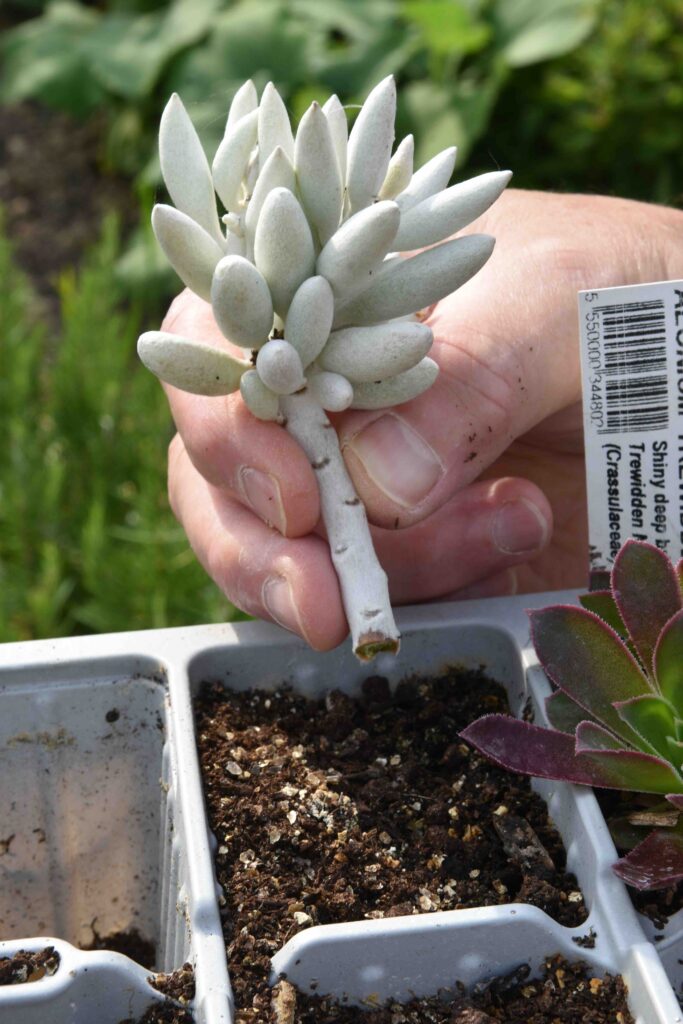
You can take cuttings of these now, removing and rooting short shoots. For these I add more perlite to the compost to improve drainage.
Echeverias are also grown from leaf cuttings. Remove mature (but not dead) leaves and push the base end into compost. The leaf will root at first but then form a small plant and these can be potted into their own pot in spring.
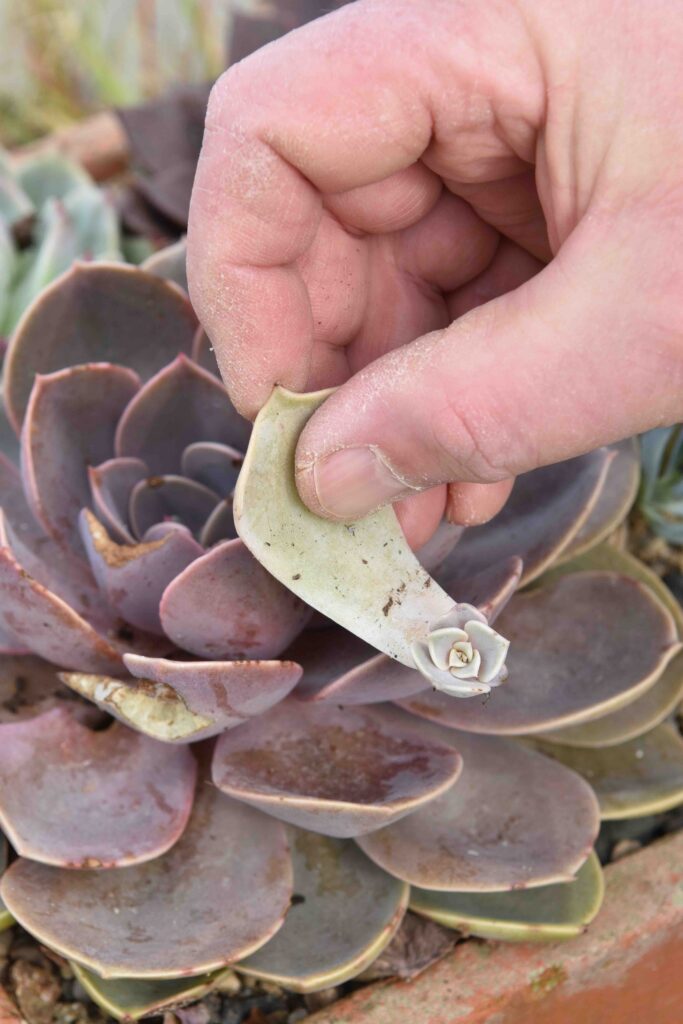
Have fun making your own free plants!
Gardening with nature in mind
I am delighted to be returning to Knights Garden Centres at the end of September to give a talk on how to encourage wildlife in your garden. I would love to see you there. Details can be found here.